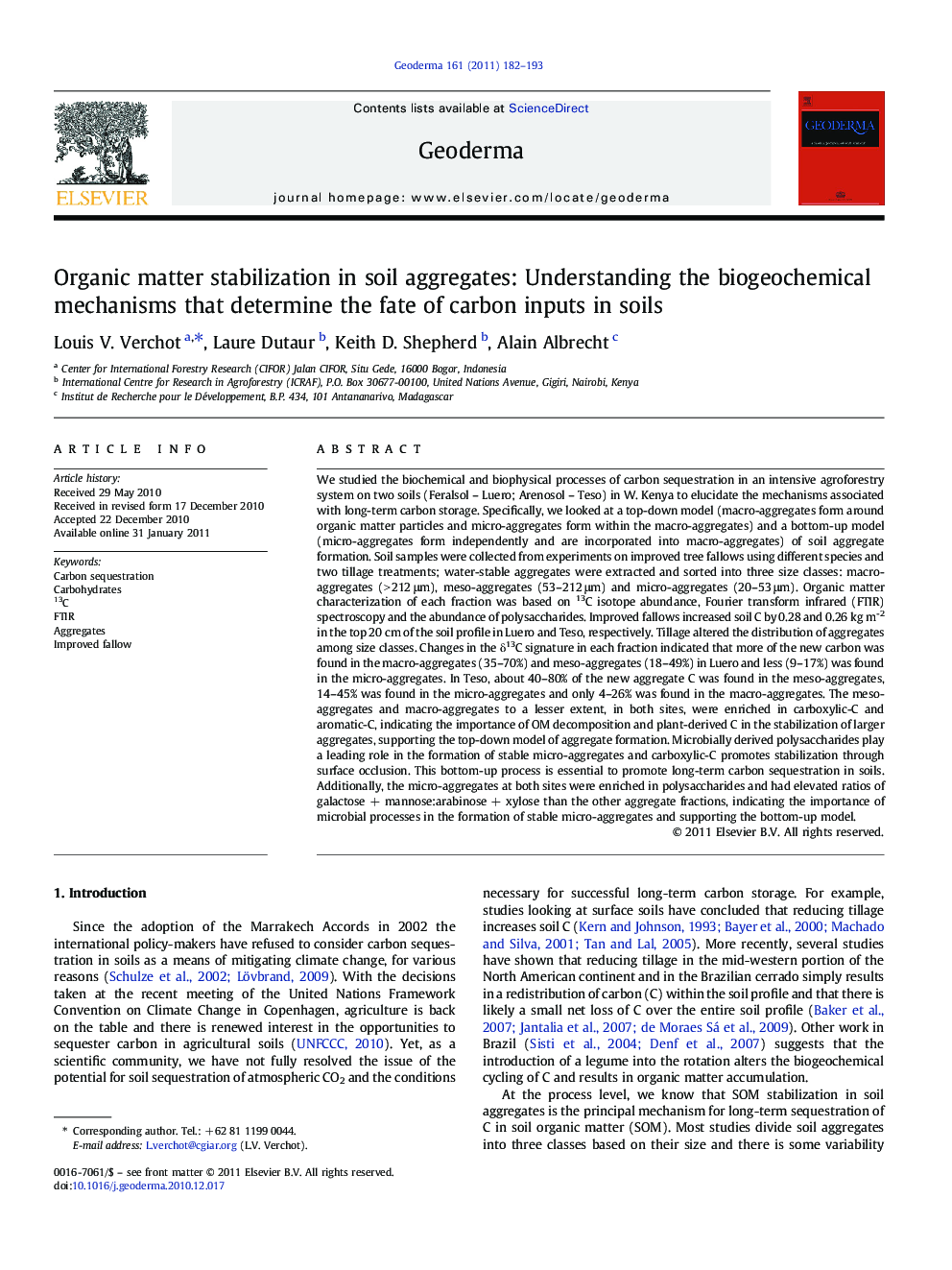| کد مقاله | کد نشریه | سال انتشار | مقاله انگلیسی | نسخه تمام متن |
|---|---|---|---|---|
| 4574181 | 1629512 | 2011 | 12 صفحه PDF | دانلود رایگان |

We studied the biochemical and biophysical processes of carbon sequestration in an intensive agroforestry system on two soils (Feralsol – Luero; Arenosol – Teso) in W. Kenya to elucidate the mechanisms associated with long-term carbon storage. Specifically, we looked at a top-down model (macro-aggregates form around organic matter particles and micro-aggregates form within the macro-aggregates) and a bottom-up model (micro-aggregates form independently and are incorporated into macro-aggregates) of soil aggregate formation. Soil samples were collected from experiments on improved tree fallows using different species and two tillage treatments; water-stable aggregates were extracted and sorted into three size classes: macro-aggregates (> 212 μm), meso-aggregates (53–212 μm) and micro-aggregates (20–53 μm). Organic matter characterization of each fraction was based on 13C isotope abundance, Fourier transform infrared (FTIR) spectroscopy and the abundance of polysaccharides. Improved fallows increased soil C by 0.28 and 0.26 kg m2 in the top 20 cm of the soil profile in Luero and Teso, respectively. Tillage altered the distribution of aggregates among size classes. Changes in the δ13C signature in each fraction indicated that more of the new carbon was found in the macro-aggregates (35–70%) and meso-aggregates (18–49%) in Luero and less (9–17%) was found in the micro-aggregates. In Teso, about 40–80% of the new aggregate C was found in the meso-aggregates, 14–45% was found in the micro-aggregates and only 4–26% was found in the macro-aggregates. The meso-aggregates and macro-aggregates to a lesser extent, in both sites, were enriched in carboxylic-C and aromatic-C, indicating the importance of OM decomposition and plant-derived C in the stabilization of larger aggregates, supporting the top-down model of aggregate formation. Microbially derived polysaccharides play a leading role in the formation of stable micro-aggregates and carboxylic-C promotes stabilization through surface occlusion. This bottom-up process is essential to promote long-term carbon sequestration in soils. Additionally, the micro-aggregates at both sites were enriched in polysaccharides and had elevated ratios of galactose + mannose:arabinose + xylose than the other aggregate fractions, indicating the importance of microbial processes in the formation of stable micro-aggregates and supporting the bottom-up model.
Research Highlights
► Improved fallows increased soil C by 0.28 to 0.26 kg m2 in the top 20 cm of the soil. > Most new carbon was found in the macro- and meso-aggregates. > Large aggregates were stabilized with plant-derived C. > Microbially derived polysaccharides were important in the stabilization of micro-aggregates.
Journal: Geoderma - Volume 161, Issues 3–4, 15 March 2011, Pages 182–193